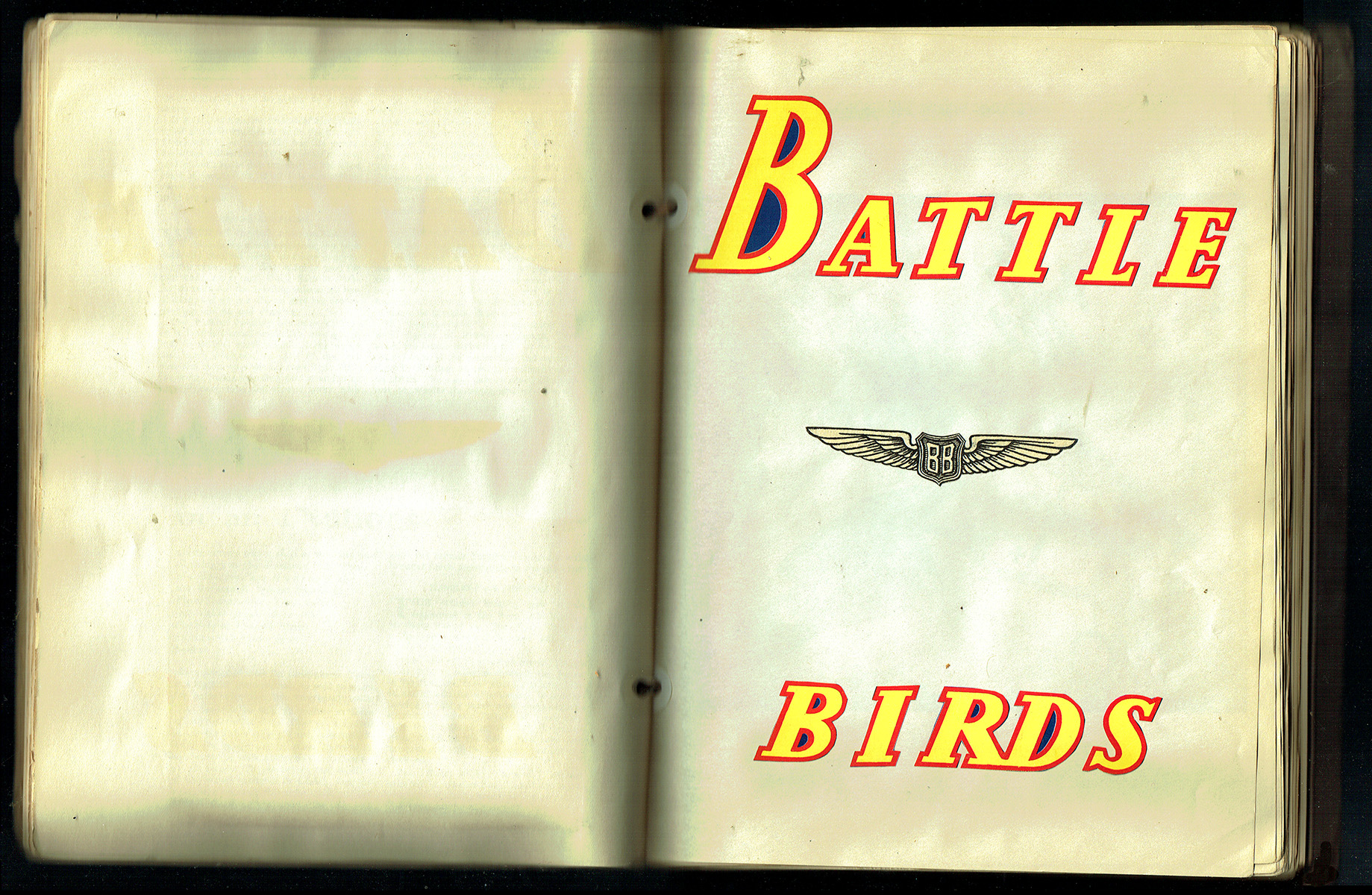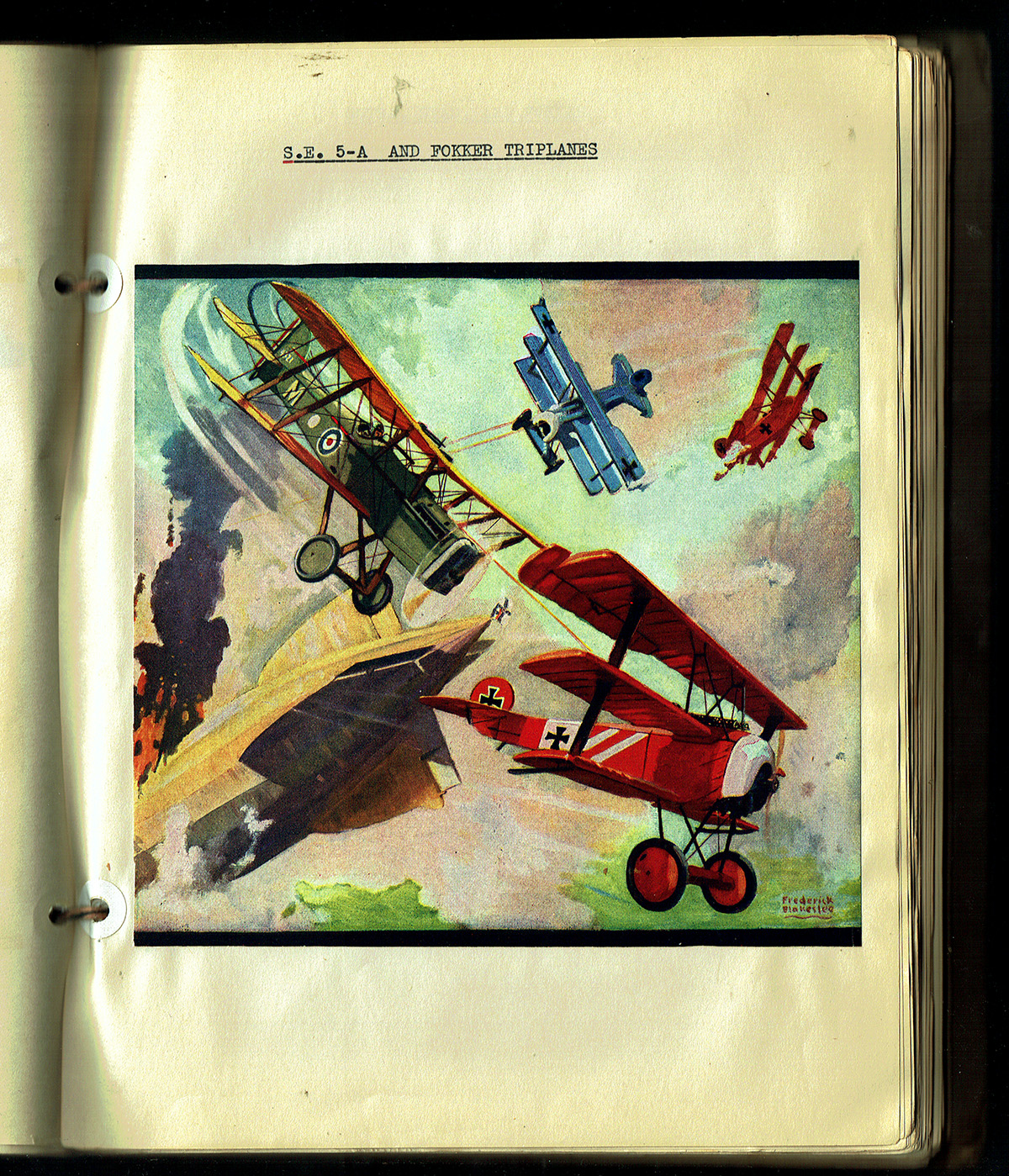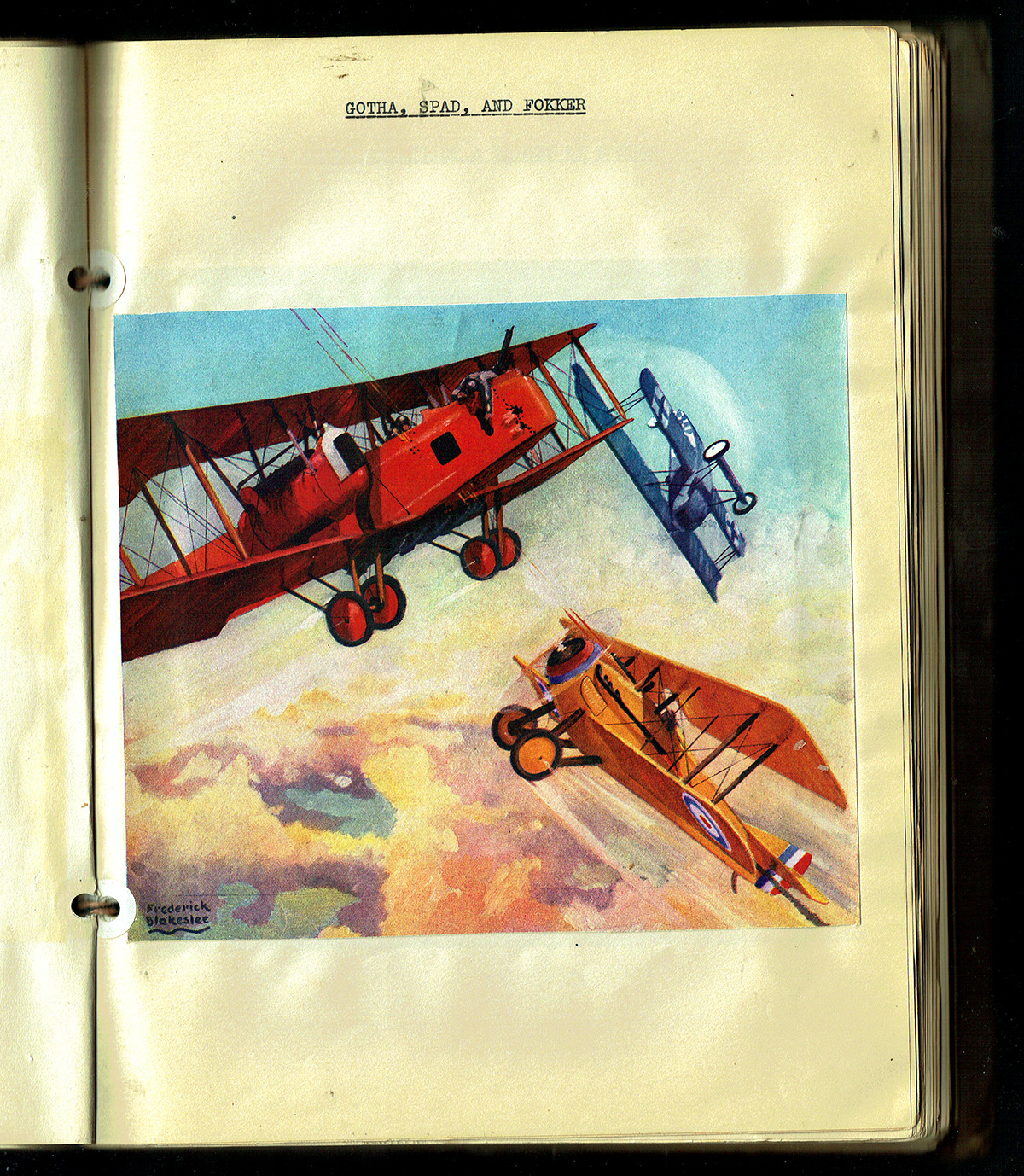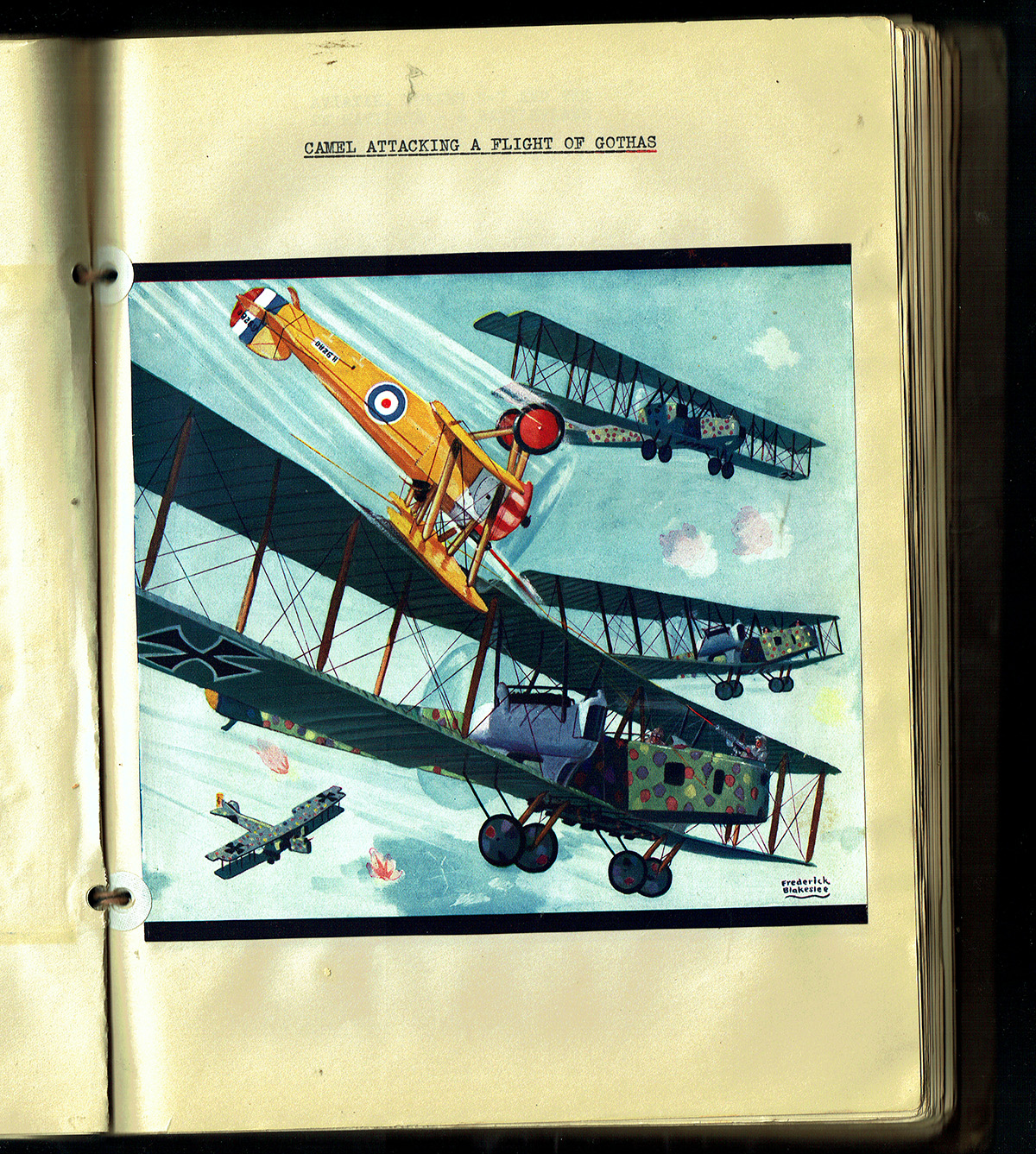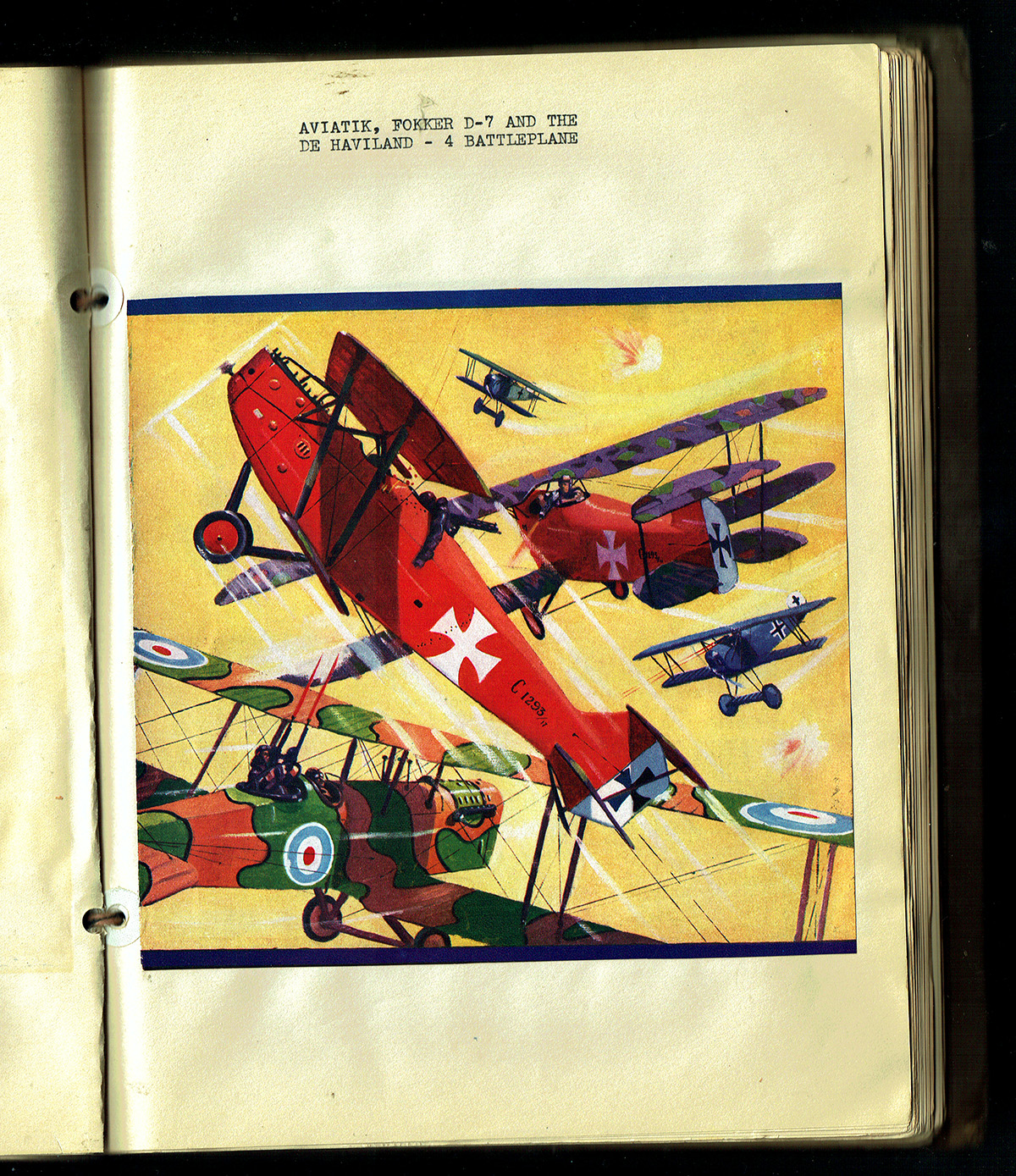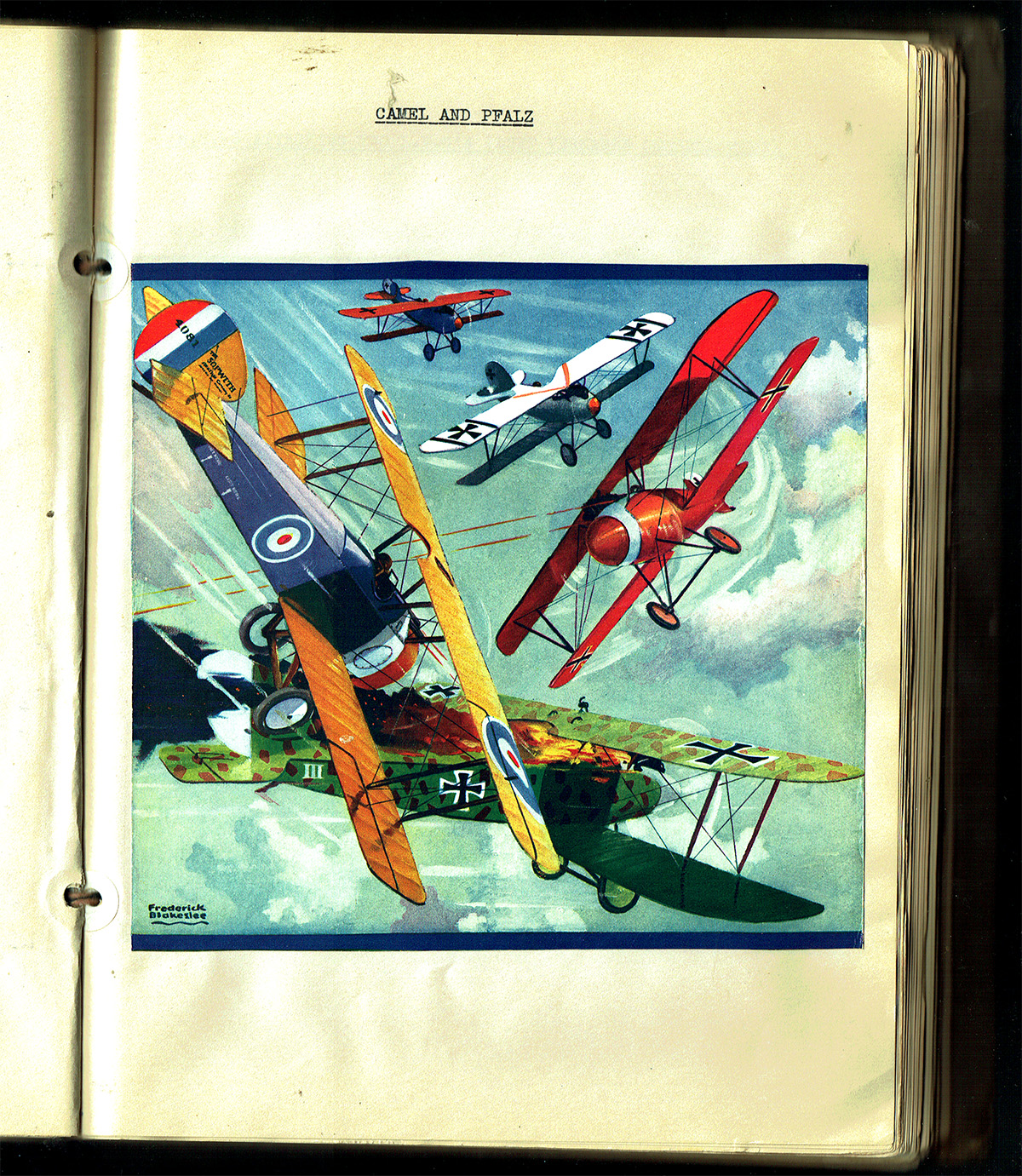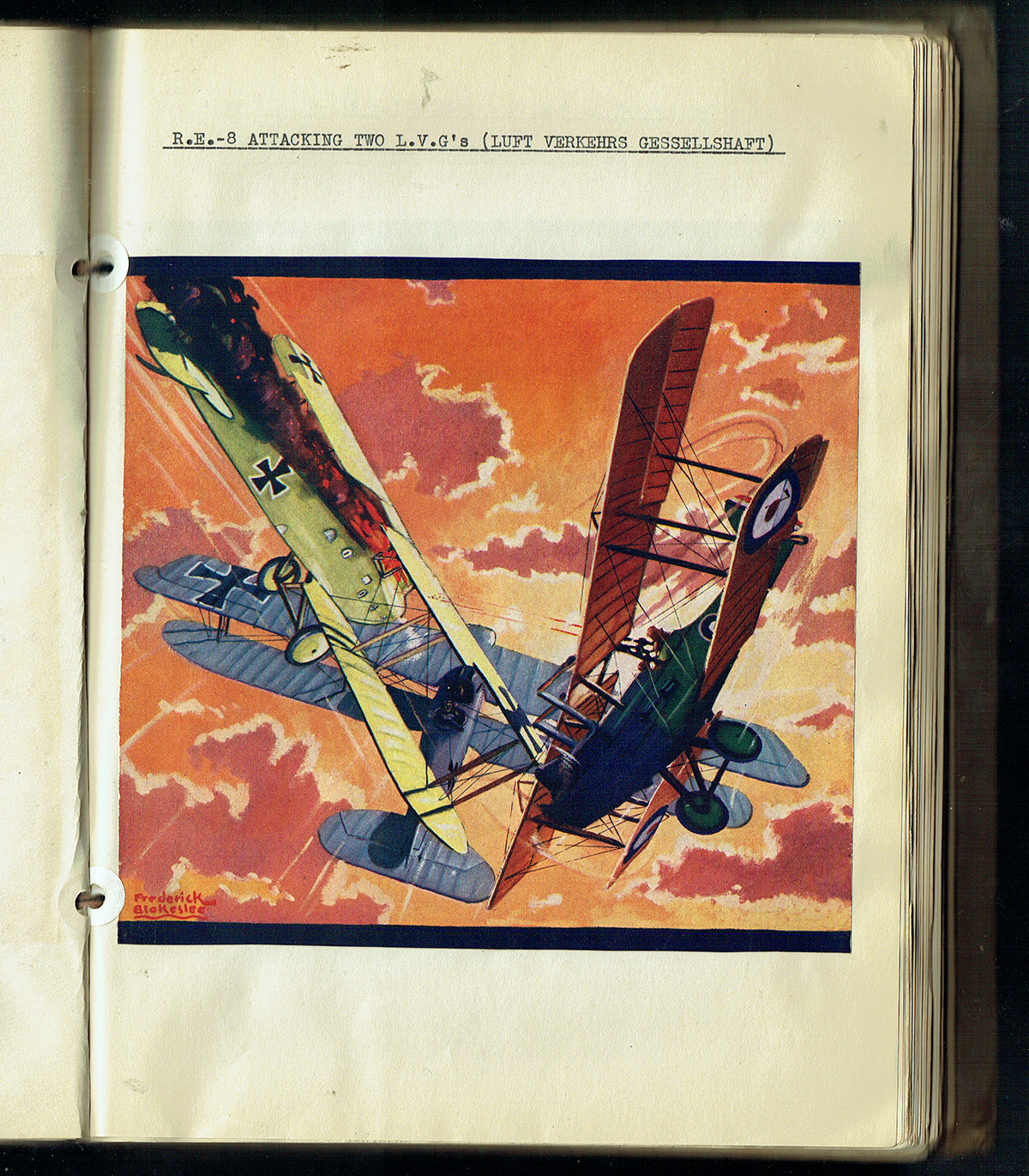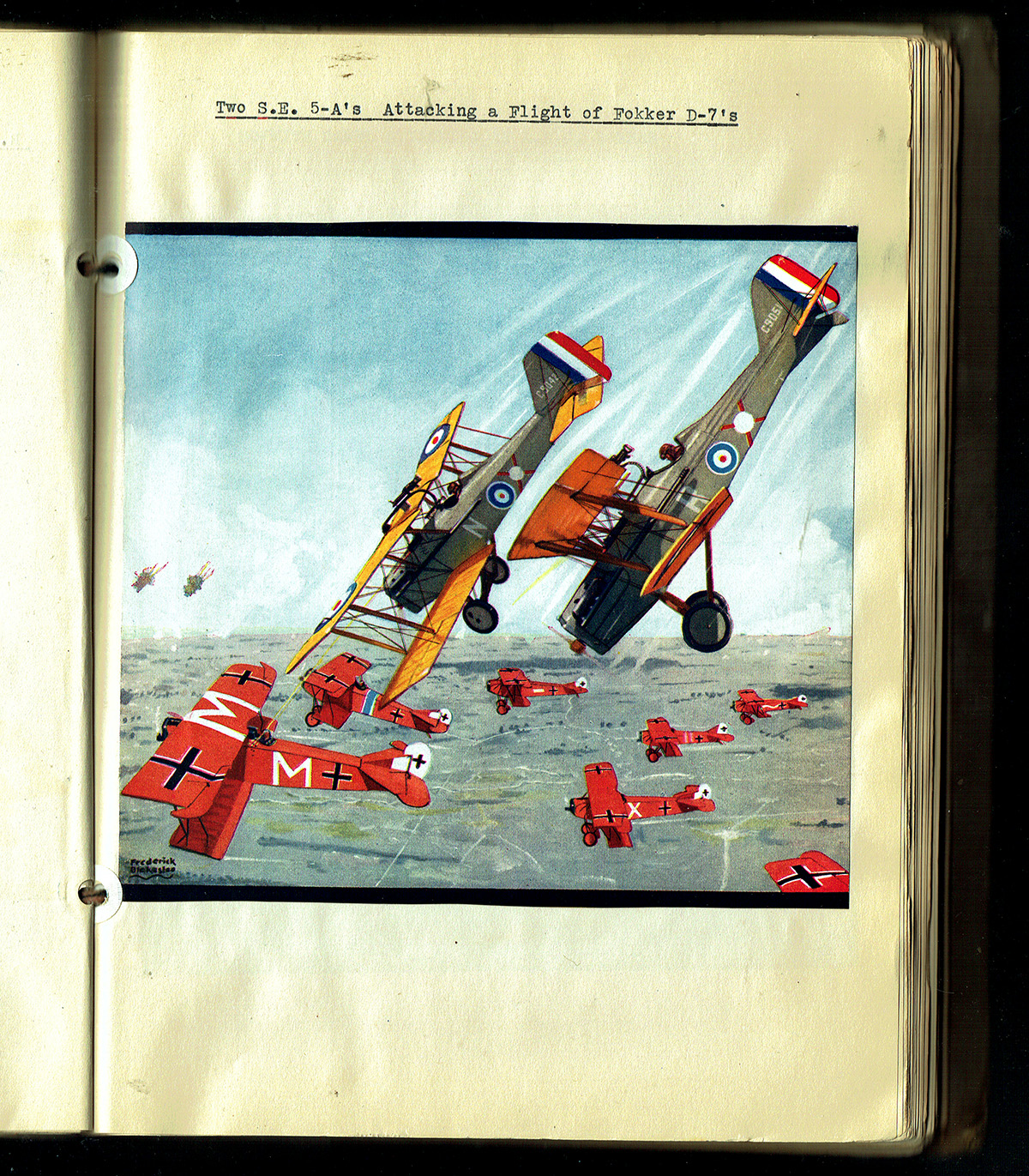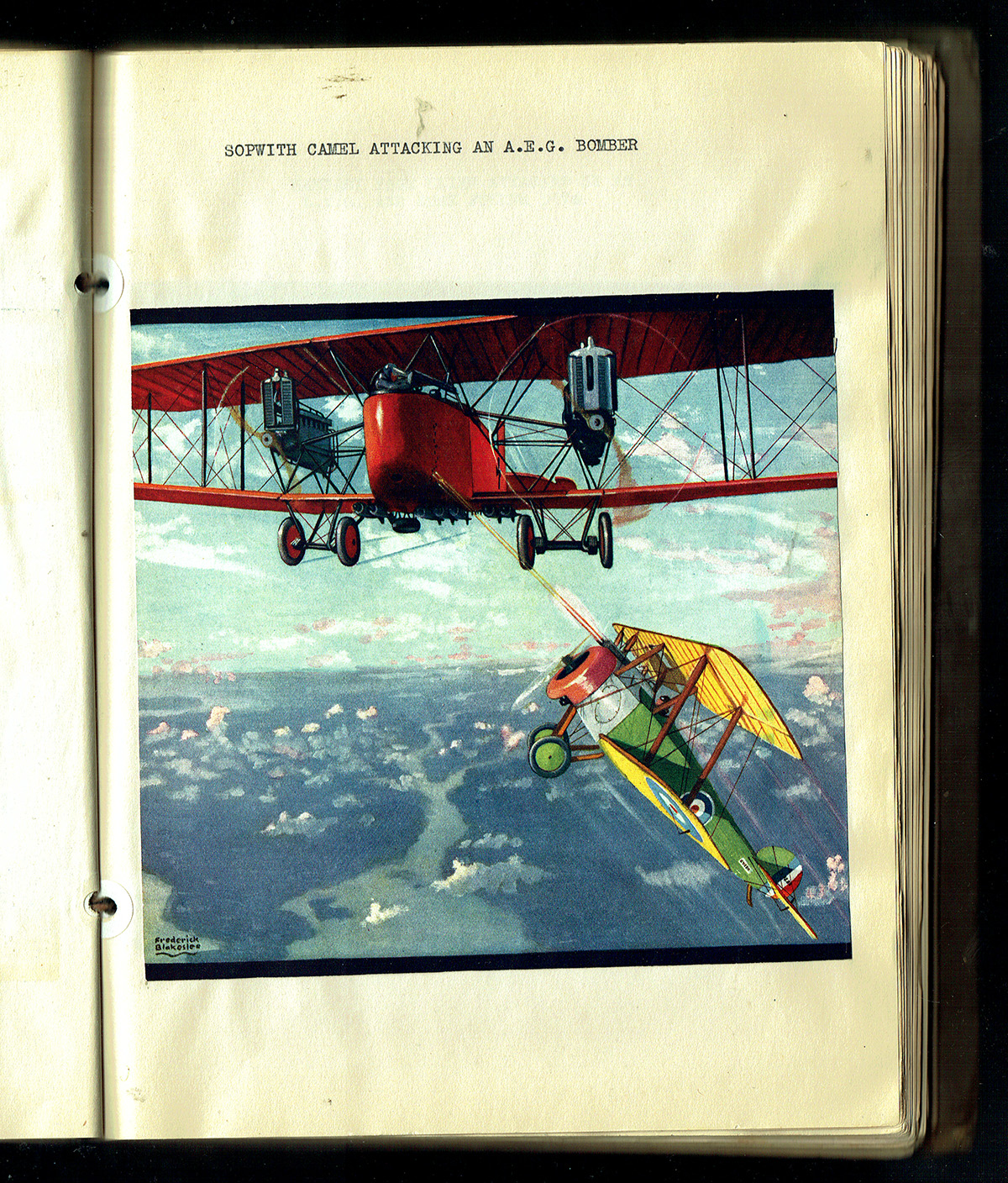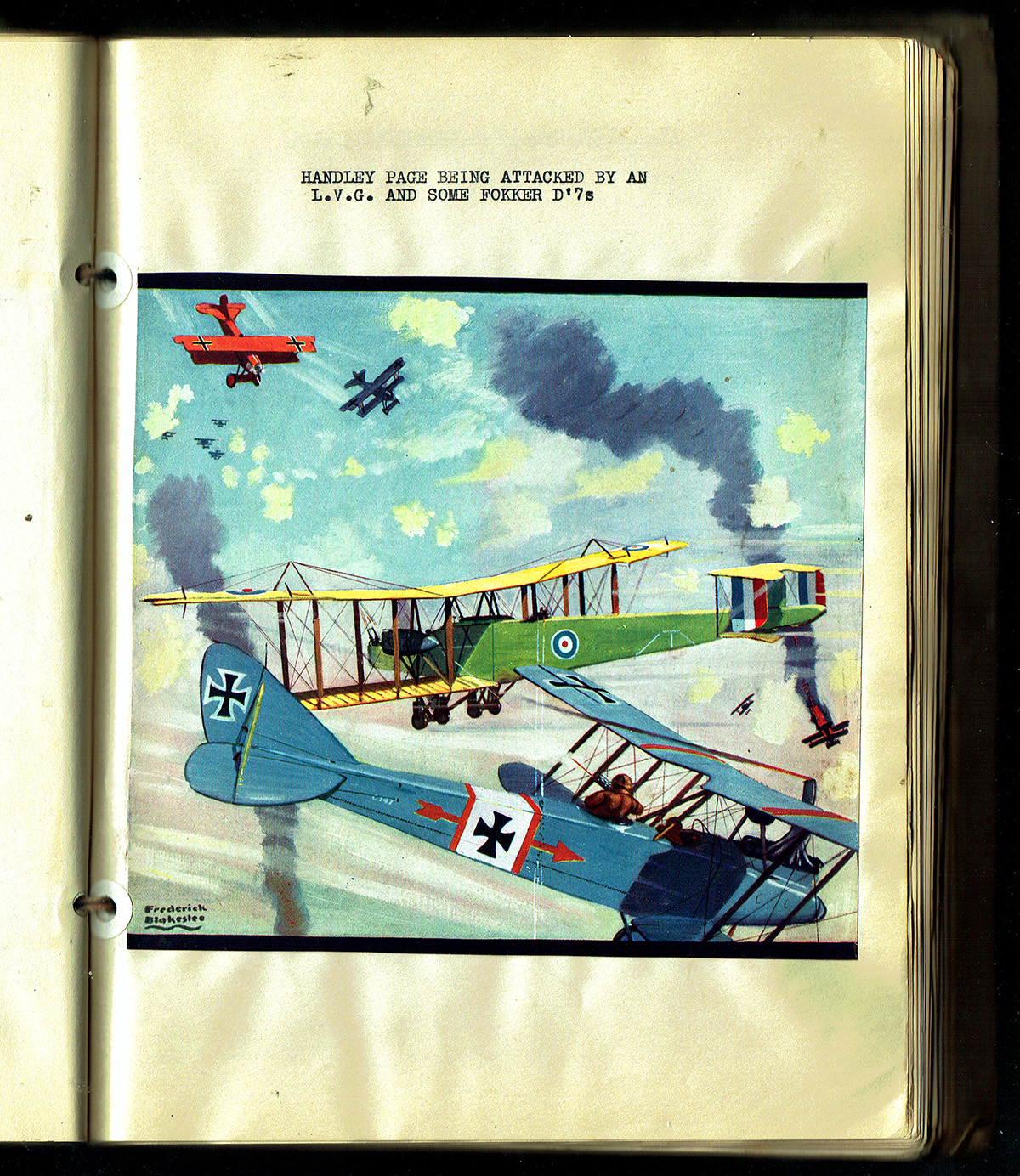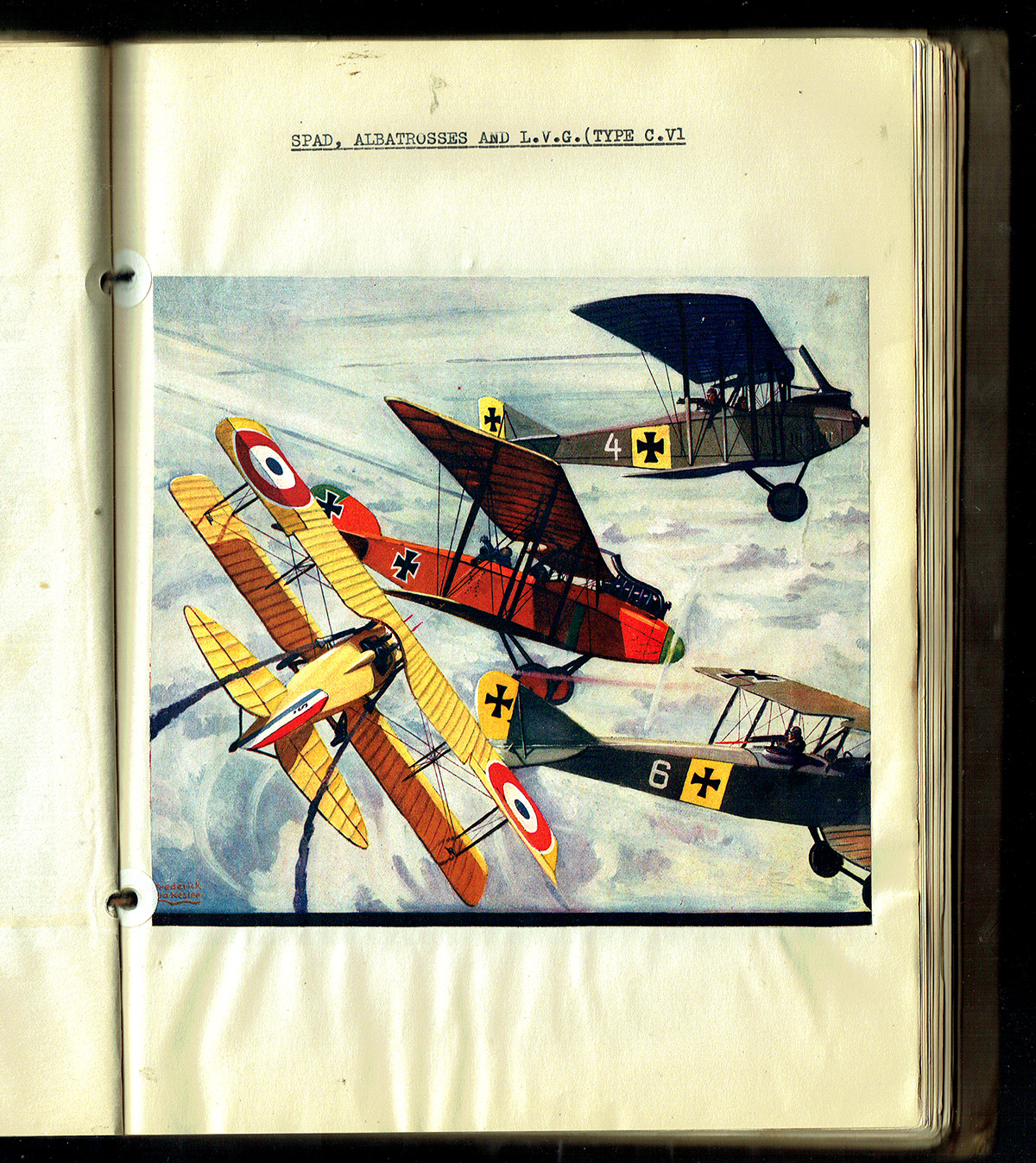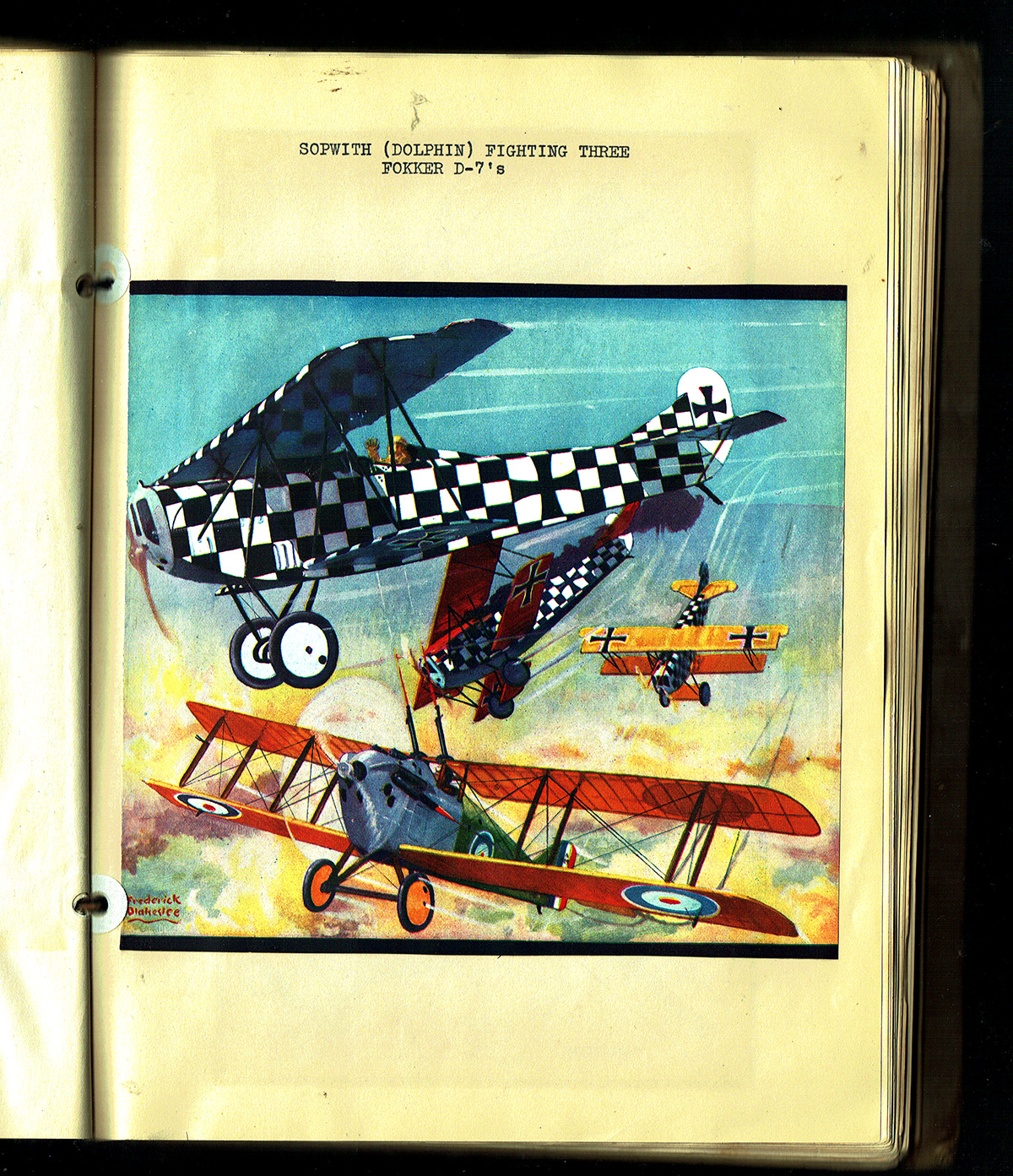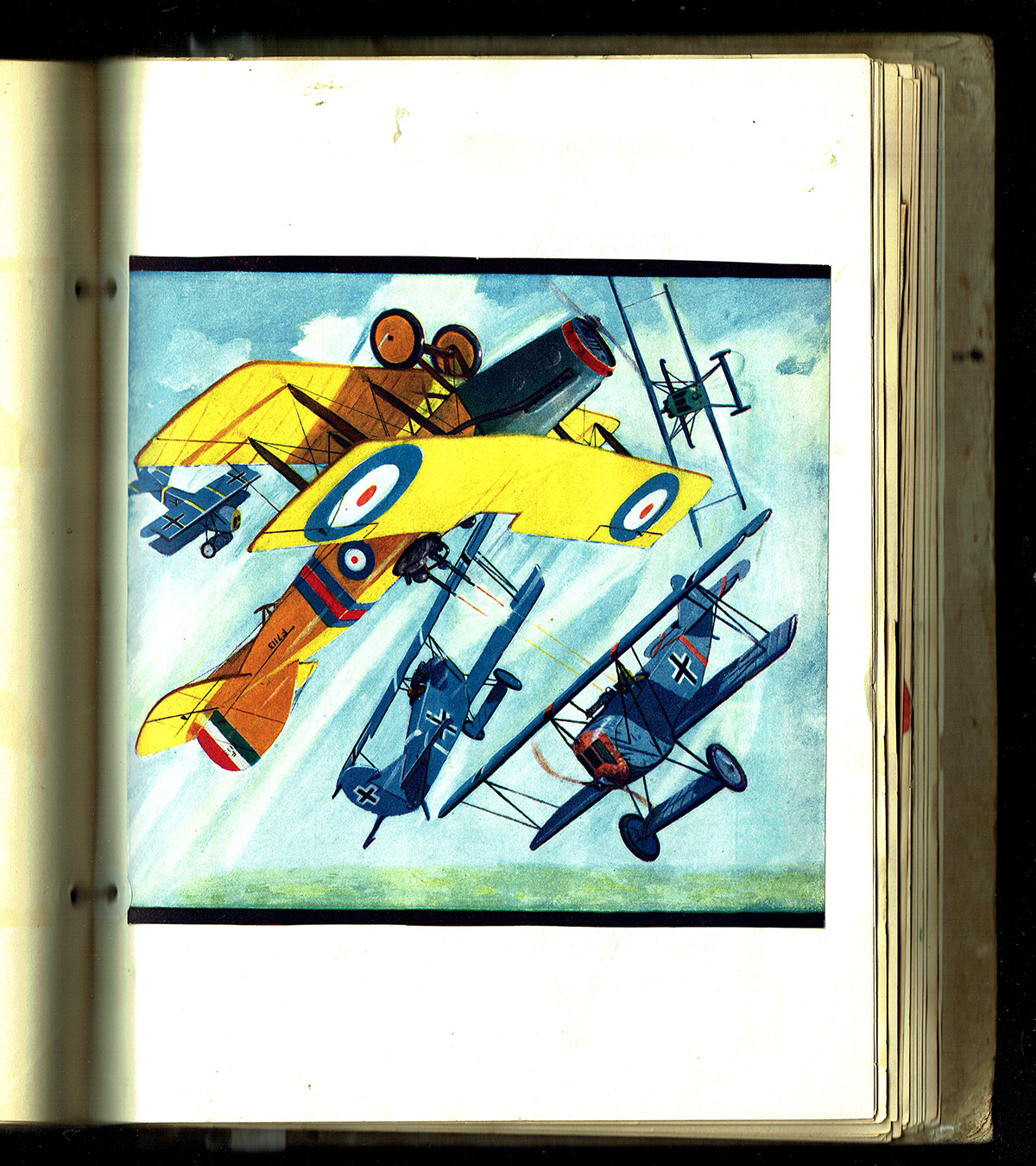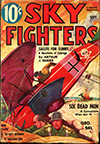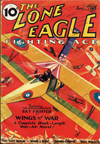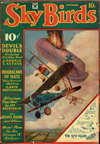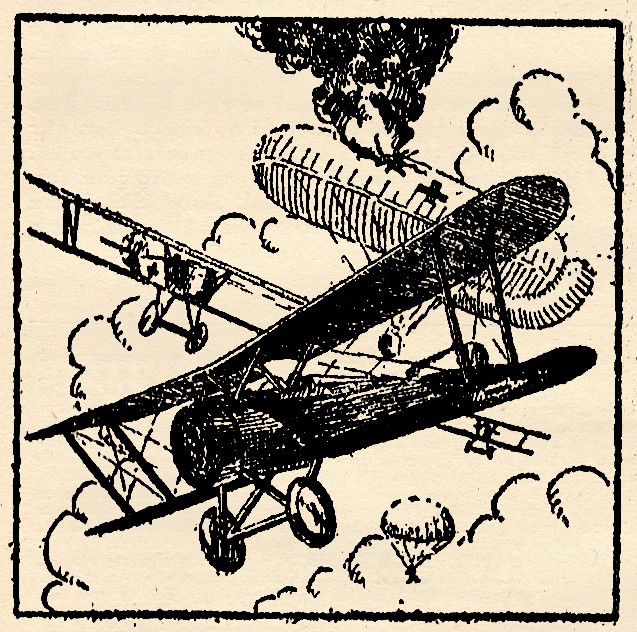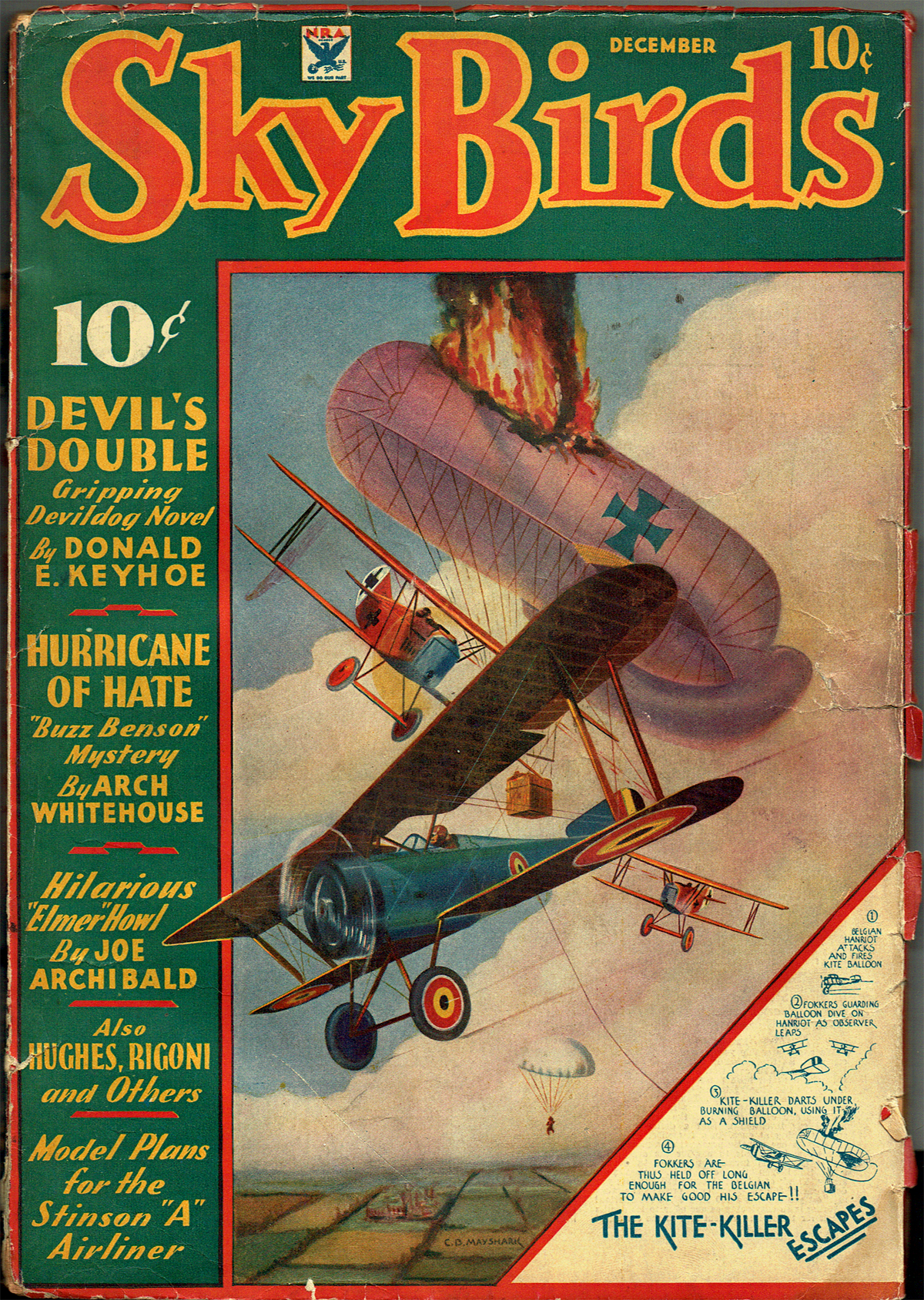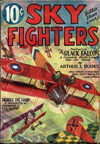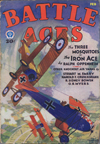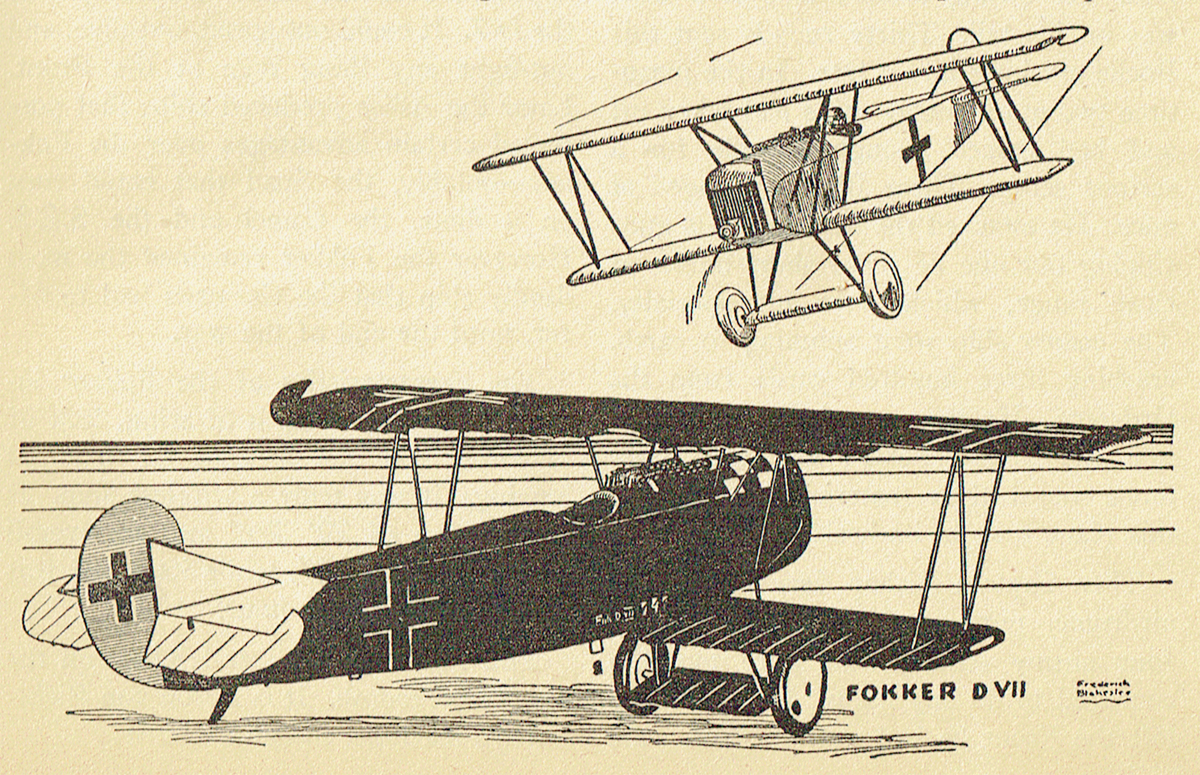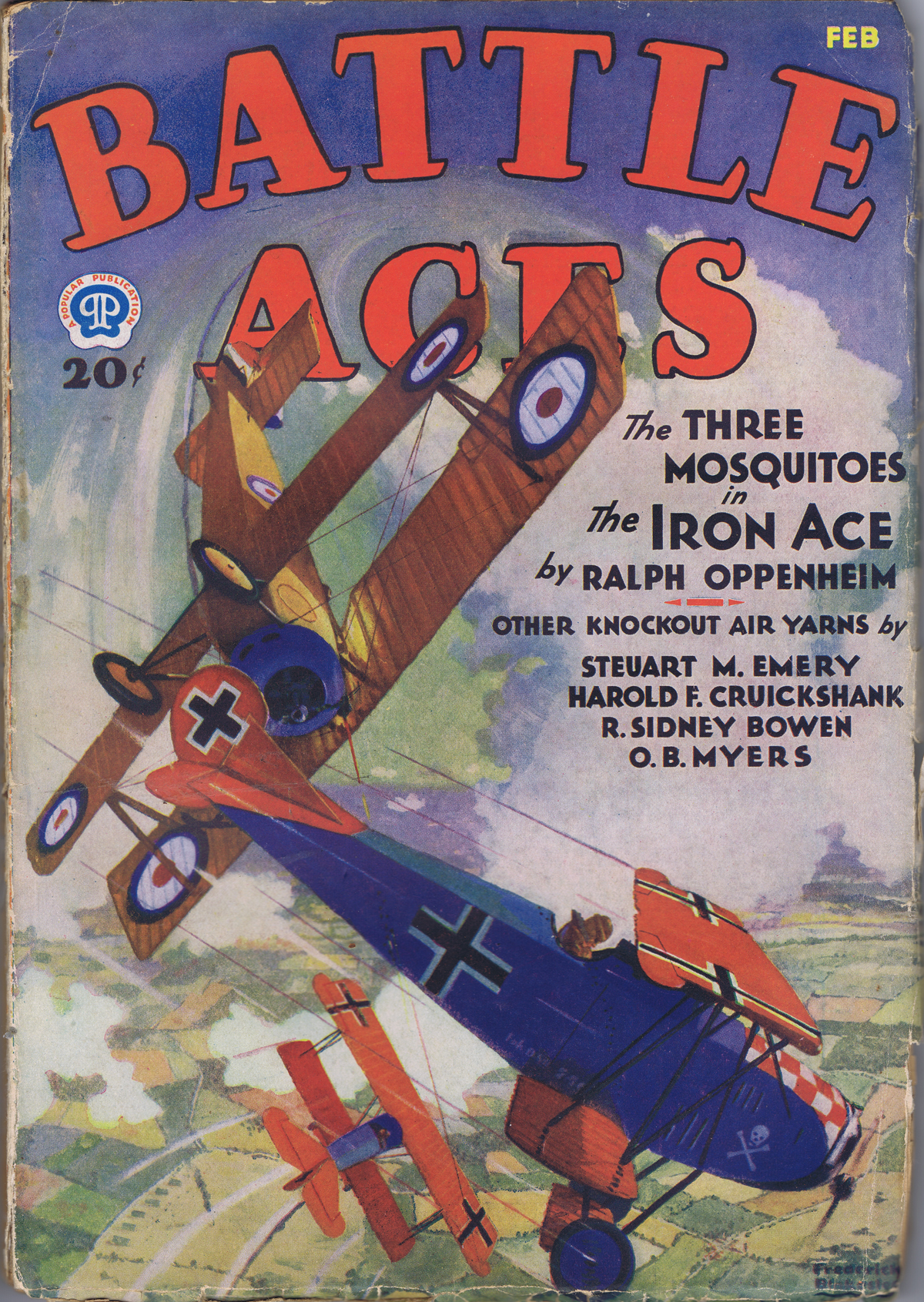Frederick Blakeslee painted all the covers for the entire run of Dare-Devil Aces. And each of those covers had a story behind it. This time, we have more of the approach he used for the covers he painted for Battle Aces—telling us about the ship on cover. But, instead of Mr Blakeslee telling us about the ship on the cover, we have Mr. Robert H. Rankin, formerly a draughtsman for the Fokker Aircraft Corp telling the story of the Fokker D-VII on the cover of the February 1935 cover of Dare-Devil Aces. . . .
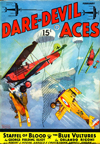 The contraption shown on the cover was supposed to have been invented just after our entry into the war. The idea was for a bomber to drop the net and then the combat ships were to lure the enemy into it, or else the combat ship was to carry the net itself. The story goes that the inventor offered it to the U.S. government, then to France and England and finally into German hands. (A similar device was employed in the Sky Devil story “The Haunted Fokker” (Dare-Devil Ace, April 1933))
The contraption shown on the cover was supposed to have been invented just after our entry into the war. The idea was for a bomber to drop the net and then the combat ships were to lure the enemy into it, or else the combat ship was to carry the net itself. The story goes that the inventor offered it to the U.S. government, then to France and England and finally into German hands. (A similar device was employed in the Sky Devil story “The Haunted Fokker” (Dare-Devil Ace, April 1933))
Now let’s review the history of the Fokker D-VII, written by an authority on the subject.
THE FOKKER D-VII
by ROBERT H. RANKIN
Formerly Draughtsman, Fokker Aircraft Corp.
TO ANY one familiar with the fighting planes developed during the World War the Fokker D-VII is outstanding. It was superior to any other plane used by Germany and it was certainly the equal of any machine used by the Allies. Using the D-VII the German pilots were able to hold their own against a much larger force of Allied aircraft, and so great did the fear of these planes become that it was definitely stated in terms of the Armistice that all Fokker planes should be destroyed.
The D-VII was the result of the gradual development of the earlier Fokker Fighters. When it was found that the 110 H.P. Le Rhone powered Nieuport easily outmoded the 80 H.P. Gnome powered Fokker the design of the Fokker tri-plane was completed.
The triplane enabled the German pilots to gain a series of impressive victories and it was used by the great von Richthofen in many of his aerial duels. Although the speed of this plane was comparatively slow, its decided ease of maneuverability more than made up for the disadvantage.
But its flight range was limited by a small gasoline capacity and Allied pilots found that the best way to escape it was to out-distance it.
As it became apparent that the fighting planes of the Allies, and in particular the Sopwith Camels and Spads, were giving them the advantages of speed and flight range the design of the D Series Fokkers was started. The first of these was the D-I, a bi-plane powered with a 120 H.P. Mercedes, and like the rest of the series it was fast and efficient.
About this time the Albatros works (Albatros Werke) began production of the D Series Albatros machines. The Albatros D-II proved itself superior to the Fokker D-I and by 1917 the later developed D-III had surplanted the Fokkers at the Front. This Albatros was powered with a 175 H.P. Mercedes, weighed 1,470 lbs. and carried a useful load of 297 lbs.
These D Series Albatros planes were a bi-plane design, having a small lower wing (made of a single spar) connected to a larger upper wing with a V strut. Any combat advantages which the Albatros offered were offset by the fact that the plane was structurally weak and the wings could not stand torsions. Consequently, when fighting the Albatros, Allied pilots had but to put their planes into a steep dive to be safe.
Many German airmen were killed when their planes went to pieces in mid-air; the celebrated Captain Boelke met death when the wings of his Albatros pulled off while he was flying over his own lines. Several pilots deliberately wrecked their machines rather than take them into the air.
The father of the D-VII was a bi-plane of somewhat radical appearance. Its fabric-covered fuselage was made of wood covered welded tubing, making a clean and decidedly streamlined job. The wings were built up of wood in much the same manner as were the wings of the later Fokker commercial types.
Although this plane offered every advantage and was years ahead of its time in many ways it was refused by the German High Command. Realizing that little satisfaction could be had from the German government (politics meaning more to them than efficient fighting equipment) Mr. Fokker managed to contact the important pilots. He found that they were not satisfied with the planes and materials furnished them and they desired to select their own equipment.
After some difficulty and much red tape an open competition of the leading makes of military planes was held. For this competition Fokker redesigned his bi-plane and the D-VII was born.

The D-VII was characterized by its cantilever wings (made up of box spars). No wires or external braces were used and the wings were joined together at the tips with a single strut. The fuselage was of a rectangular cross section which feature made for simplified manufacturing and quantity production. By streamlining the landing gear axle with a tiny wing, speed was added to the plane.
The D-VII fast became a favorite of the pilots. Although the Rumpler climbed faster, it handled very badly, especially on the turns. So great was the demand for the new Fokker that the factories making other planes were required to stop production of their own types and concentrate on the building of the D-VIIs.
The following figures give an insight into the construction and performance of the plane.
| Wing curve |
Fokker varying |
| Sweepback |
None |
| Dihedral, upper wing |
2° |
| Dihedral, lower wing |
1° 20′ |
| Stagger |
2′ 1″ |
| Total wing area, including ailerons |
236 sq. ft. |
| |
| Upper plane— |
| Span |
27′ 5½” |
| Chord |
5′ 3″ |
| Area, with ailerons |
145 sq. ft |
| |
| Lower plane— |
| Span |
22′ 11¼” |
| Chord |
3′ 11¼” |
| Area |
91 sq. ft. |
| Incidence |
1 to 1.5 degrees |
| Gap |
4′ 6¼” |
| |
| Fuselage— |
| Max. cross section shape |
Rectangular |
| Max. cross section area |
9.35 sq. ft. |
| Max. cross section dimension |
3′ 9½” by 2′ 5½” |
| |
| General Dimensions— |
| Overall span |
27′ by 5½” |
| Length |
23′ |
| Height |
9′ 3″ |
| |
| The weight of plane (empty, including water) |
1,867 pounds |
| The weight of plane loaded |
2,462 pounds |
The endurance of the Fokker D-VII is, full throttle at 10,000 feet (including climb) 2 hrs. 13 minutes.
Minimum speed of the D-VII at sea level (lowest throttle) is 62 miles per hour.

“The Fokker D-VII” by Frederick Blakeslee (February 1935, Dare-Devil Aces)
Mr. Blakeslee covered the Fokker D-VII himself with the story of Billy Bishop for the cover of the February 1932 number of Battle Aces.
 BRITISH against German—S.E.5 against Fokker—that’s the struggle depicted in this month’s cover. The S.E.5 has taken a long dive and is raking the Fokker from wing tip to cockpit. In this particular bit of action, the German was wounded in the legs, and with great difficulty escaped to his own lines.
BRITISH against German—S.E.5 against Fokker—that’s the struggle depicted in this month’s cover. The S.E.5 has taken a long dive and is raking the Fokker from wing tip to cockpit. In this particular bit of action, the German was wounded in the legs, and with great difficulty escaped to his own lines.





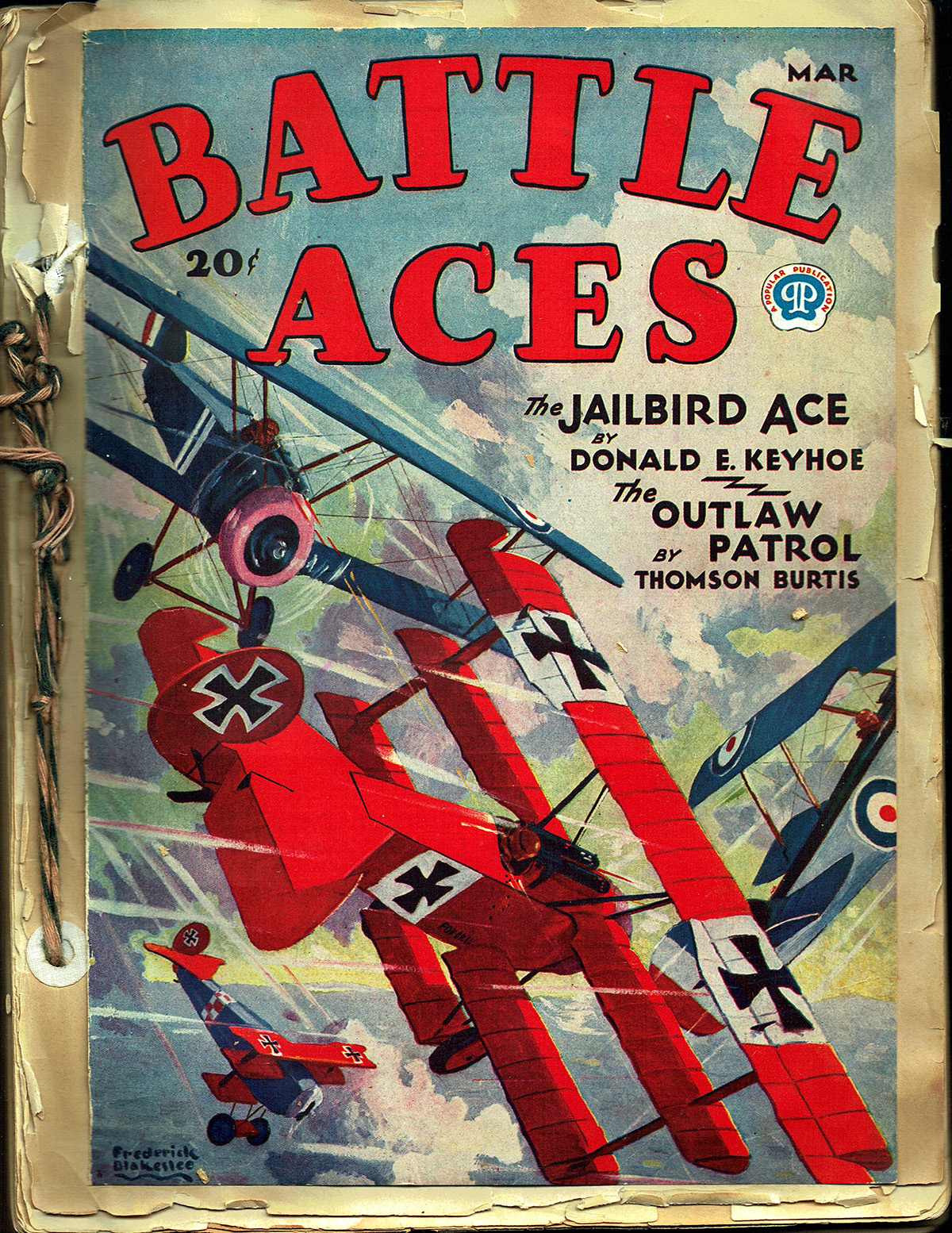 Like many in the late 20’s and early 30’s, Robert O’Neil was fascinated with aviation and as such, a large part of both volumes of his scrapbooks is taken up with a cataloging of the many different types of planes. In addition to Flying Aces’ “War Planes Album” and Sky Birds’ “Model Planes of All Nations”, Robert also featured Frederick Blakeslee’s magnificent Battle Aces covers.
Like many in the late 20’s and early 30’s, Robert O’Neil was fascinated with aviation and as such, a large part of both volumes of his scrapbooks is taken up with a cataloging of the many different types of planes. In addition to Flying Aces’ “War Planes Album” and Sky Birds’ “Model Planes of All Nations”, Robert also featured Frederick Blakeslee’s magnificent Battle Aces covers.